-
Posts
4,737 -
Joined
-
Last visited
-
Days Won
119
Content Type
Profiles
Forums
Resource Library
Events
Gallery
Blogs
Store
Community Map
Posts posted by Mayner
-
-
42 minutes ago, Galteemore said:
You might also have an opportunity to fit dummy valve gear, as I think the splashers are moulded into the flat plastic panel which in real life would be daylight under the boiler. . Removing the splashers outwards will open that space up as it should be. Thankfully Jinty bodies are straightforward to pick up used so you can have a play around with some old ones before tackling that lovely UTA livery!
Brassmasters produce etched replacement splashers for the Bachmann 3F & 4F which may be useful in converting a Jinty to 21mm gauge.
There are a couple of Jinty detailing articles including one with what looks like Brassmasters splashers and finer detail https://p4newstreet.com/back-to-the-beginning-and-then-a-bit-more-too/ and achieving daylight under boiler https://www.rmweb.co.uk/forums/topic/182307-the-hard-white-underbelly-of-the-jinty/
Starting with a used Hornby body would be a good option to practice on before tackling the Marks Models Jinty body, though on second thoughts probably best to store the Marks UTA Jinty as a mint collectors item and use a standard Hornby or Bachmann as a guinea pig for a 21mm conversion and repaint.
-
 1
1
-
 2
2
-
-
25 minutes ago, Horsetan said:
....and very good value that Z conversion etch turned out to be, as the first one had mysteriously missing rivet detail. The replacement was perfect, meaning I had two etches for the price of one and a source of spares in case of assembly mistakes.
It then turned out Des was out of stock of J15 kits, and he had to wait about five months for supplies of new etches to arrive!
The J15 conversion kit evolved significantly since the initial test etch was prepared about 10 years earlier, to include modular firebox and smokebox sub-assemblies and replacement loco and tender brake gear. The rivets were missed in the production batch as a result of a change from my usual drawing methodology and our supplier PPD promptly supplied replacement frets without charge and my customers ending up with a source of spares.
Interestingly I noticed that one of the coupling rods was damaged on my superheated J15 a work in progress for the past 10 years and HT has reminded me that I have a set of replacement rods in stock and may actually find time to complete the loco this year.
-
1 hour ago, LNERW1 said:
Nothing has happened.
Does anyone have any advice on realistic couplings? Just looking for somewhere to get fairly cheap, good-looking three links. Thanks.
Smiths Couplings available set of 8 from Peters Spares in the UK https://www.petersspares.com/p/smiths-lp1-couplings-eight-etched-brass-3-link-couplings-kit-form possibly a bit fiddly to assemble (fine nose pliers), but fairly popular with modellers that use 3 Links
Markits another coupling and parts supplier are currently not taking orders because of medical issues http://www.markits.com/

BR Open Wagon assembled from a Parkside kit with Smiths Instanter couplings, wagon is overdue for repairs!

Underside of wagon showing coupling hook and spring, no bracing or obstructions in the way, but it looks like I ground off a moulding for a coupling mount.
These type of couplers are easy enough to fit to kit or scratchbuilt wagons, but more challenging to diill a hole/form a slot for the coupling hook and spring in a rtr chassis with a plastic injection moulded underframe.
IRM screw or instanter couplings are probably the best option for fitting scale couplings to their wagons https://irishrailwaymodels.com/en-au/collections/couplers?srsltid=AfmBOoot0kRhFMSdFA_pwavabhrZvsU-9yso5SKcJwcLJswmBxiIAwRQ
-
 1
1
-
 1
1
-
 1
1
-
-
2 hours ago, derek said:
God John, ye were spoiled in Dublin with such a choice of shops stocking model railways. The only alternative we had in Limerick to Tots to Teens was when Ryans Hardware (also on Patrick St.) would stock up on toys for the Christmas season, and a few train sets would be included. We didn't know how to handle all of the options

Our family didn't have the income to stock up on toys so no need to worry about the options. Visiting the shops almost weekly drooling over the stock and pestering the staff was the main outlet until I started work and could just about pay for the odd item.
 .
.
Interestingly my first train sets were battery powered tin-plate circle of track fairly crude approximation of an American steam loco and later a diesel Streamliner all 4 wheelers possibly made in Hong Kong or Japan, possibly from the toy department of a Department Store or Hector Grey's shop on Liffey St the 60s equivalent of a pound store.
The Lego train (loco and a circle of track) when it came out was a big step forward, I could assemble and dismantle the loco and set up the track to run point to point and converted the loco from a tank to a tender loco with a set of road wheels with the tyres removed!
-
 3
3
-
-
Growing up in Dublin in the late 60s Triang-Hornby model railways were widely available in shops that sold Bikes, Prams, Radios/TVs and Furniture. Model railways seem to have been stocked in shops in the suburbs not just the city centre, I used to check out the train sets including the Breakdown Set in the window of Lambert's radio shop in Crumlin Village and later the Big-Big Train sets were displayed in O'Neill's furniture store locally known as Mickeys Stores that did a lot of its business on the never-never.
The model trains along with prams, bikes and toys would have been distributed through Lines Brothers Irish distributor on Shanowen Road Santry (I forgotten the name of the business!) and it would make sense to distribute the model model trains through the Bike, Pram and Radio shops.
"McHugh Himself" bicyle shop under the Loop Line bridge on Talbot Street stocked model railways though I never checked out the shop, I used to regularly visit a Radio Shop on Mary Street that appeared to have a good stock of Triang-Hornby model railways, the assistant was friendly and helpful, but at the time did not have the money to buy anything! Shop closed during the early 70s possibly disappeared into the Jervis Centre.
Around the same time a shop on Liffey Street that possibly disappeared into the Arnotts Department store re-development had a basement apparrently devoted to model railways, including a large stock of Merit detail parts including a Scammel 3 wheel truck and trailer.
There was a long narrow (bicycle) shop at the corner of Grafton Street and St Stephens Green that stocked model railways including unsold Triang "Block Instruments" that also disappeared in the eraly 70s.
My first 'proper' trainset was a Triang-Hornby 'South African Goods' chosen as a Christmas present in "Terrys' Toy Shop" Henry Street when I was 12. nothing South African about it a BR M7 steam loco, 2 opens, 1 van and a Brake which did not appear in the catalogue. Terry's also had a Georges Street store and I checked out both shops on Saturdays and during School holidays almost weekly as a 12-13 year old.
I broadened my horizons shopping for the following Christmas to check out Southern Model Railways at their Lr Leeson Street shop and the Model Railway Shop at Monch Place, Phibsboro (on different days!) A Trix 'Trans Pennine DMU" caught my eye at Leeson Street, it looked really attractive but I hadn't a clew about it! I split my business between Leeson Street and Monck Place, buying a Trix E2 0-6-0T and a Triang-Hornby 0-6-0 diesel shunter both second hand unsure from which shop. The diesel shunter was in 'trade in' for the M7, which had being a tinkerer I had dismantle and attempted to re-assemble mucking up the quartering on the driving wheels.
Southern Model Railway Co re-located to a very posh up-market store in the Grafton Arcade with beautiful displays or Triang-Hornby, British Trix and possibly continental models and rtr Irish models produced by Harry Connaghton (a professional model maker) and occasional second hand items. From memory Harry's 21mm gauge model of a GNR JT 2-4-2T retailed for approx. £30 at a time the weekly wage averaged.£20.
I settled into a routine of visiting Southern Model Railways weekly with a monthly subscriptions for the Modeller and Model Railways with occasional visits to Monck Place until I started working full time at 18. The change in ownership to Marks Models with the departure of the long time manager/assistant Eddy (Elliot?) and the cancellation of regular magazine orders apparrently without notice came as a shock. The move to Hawkins Street and the shift to becoming a Hobby Model Shop as opposed to a specialist Model Railway shop was probably essential for the survival of the business.
Model/hobby shops began to appear as such during the 70s John Byrne established/managed a Model Shop at Rathfarmham Shopping Centre with Declan Lonnigan (MRSI comittee member) running the model railway side on Saturday's, Rathfarnham became a family excursion my parents weekly shopping while I visited the model and book shops sometimes followed by a visit to the Orchard Inn. The Rathfranham shop became my introduction to N during the late 70s started by buying 2 wagons before buying a couple of packs of Peco flexible track and a large stock of Farish wagons. John Byrne's Sackville Place Hobby Shop became a major sorce of N gauge stock, along with Nimble Fingers (Stillorgin).
Moving to London in the 80s opened a whole load or posibilities including checking out specialist Model Railway shops such as W&H, Kings Cross Models and Victors, exploring the Country and visiting exhibitions which kept me buys for several years. My purchasing became more focused on attending exhibitions and mail order before eventually focusing on designing and producing my own models.
-
 3
3
-
-
6 hours ago, Colin R said:
Hi Guys, I have just spoken to Allen Doherty and he tells me that no one has sent him any Irish loco drawings recently so if you want him to produce the etches for any Irish steam loco, now is your opportunity to do so.
The only proviso is that he would like to know that he could produce a minimum of six kits that will have homes to go to.
I am, not sure if anything happened but I would not mind the loco that appeared in the Quiet Man film.
Colin
I agree with HT finding orders for six sets of Worsley Works parts for an Irish steam loco is a big ask. In my experience overall demand for kits of Irish locos and stock is very low and demand for basic kits/scratchbuilders parts of Irish locos almost non-existant.
Sales of the JMD GSWR 52 Class, MGWR Ks/ GSR 650 2-4-0 averaged 12 kits, HT was the only person who was prepared to place an order when I announced the Z Boiler conversion kit for the SSM J15.
I can supply the etched parts for the GSWR 52 Class (Quiet Man engine", MGWR Ks, 650 2-4-0, MGWR Meat Van, MGWR Horse Box to order in 4mm and 2mm scales direct from our supplier in the UK. The 52 Class was originally intended to run with the SSM 1804 (J15 tender) however a set of parts for the larger GSWR Type B tender built to run with gthe 52 Class is also available to order.
I have also produced an etch for the (slightly) larger 60 Class (D14) 4-4-0, but haven't had time to assemble the loco.
I can supply the etches of the 52 Class, 3 versions of the MGWR Ks/650 Class, MGWR Meat Van & Horseboxes to order direct from our supplier in the UK in 4mm and 2mm scales. The 2mm versions were originally commissioned by Angus.
-
 4
4
-
-
2 hours ago, 2996 Victor said:
As I understand it, these would be the etchings only, no castings, which would mean finding period-correct chimney, dome, etc.
John @Mayner, were the later boilers of different diameter? Or is it just that different style smoke doors were fitted? And also when Inchicore style smokeboxes etc were fitted?
Many thanks,
Mark
E/J26 boiler diameters remained the same. It looks like the Inchacore style smokeboxes and built up chimneys were fitted gradually as locos were overhauled at Inchacore, some locos retained flush riveted smokeboxes and tall MGWR pattern funnels at least into the late 30s. Best advice is use a dated photo if you intend to model a particular loco.
The class was re-boilered by the MGWR between 1911 & 1925 (GSR Locos Clements & McMahon) the main visual changes were the replacement of the original Atiock pattern smokebox door & front Vac pipe arrangement and the fitting of Ross Pop safety valves.

556 MGWR 111 Wasp. undated photo. Rebuilt 1923 MGWR pattern smokebox door with handwheel, flush riveted smokebox and Ross Pop safety valves
There are photos of 552 & 558 running in this condition in 1939.

Aug 1935 photo of 554 at Broadstone with riveted smokebox and built up chimney.

554 Galway 1955 with smokebox handwheel, photos indicate that some locos retained smokebox 'darts' rather handwheels and smokebox handrail arrangement varied between locos.
-
 1
1
-
 1
1
-
 1
1
-
-
2 hours ago, NorthWallDocker said:
@2996 Victor and @Horsetan: Studio Scale Models already offer etched brass kits of the MGWR E class (J26). See http://www.studio-scale-models.com/Locos.shtml
The Studio Scale Models version of the E Class (J26) is probabably the best option for modelling a loco in MGWR-GSR condition and the Alphagraphix version for modelling the J26 in late GSR-CIE condition.
The SSM kit is supplied with parts (etched and cast) to assemble the locos in original condition before they were re-built with new boilers after 1911, but curiously includes etched parts to assemble the locos as running on the Waterford & Tramore with enclosed extended bunkers and recessed footsteps. The locos rebuilt after 1911 retained their original chimney and dome, but the smokebox replaced with a less ornate dished version and safety valve covers removed.
The Alphagraphix model appears to be the late (post 1940) GSR version with riveted smokebox, 'built up" Inchacore chimney and plain smokebox door.
The TMD/SSM kit chassis can be assembled to OO or 21mm gauge in rigid or compensated form. The kits were orignally supplied with a brass chassis etched from the same thickness of material as the body, later kits with an additional nickle silver chassis with beam compensation. I have TMD/SSM MGWR E/J26 kits with both the original brass and later replacement nickle silver chassis both run fine!
-
 1
1
-
 1
1
-
 1
1
-
 1
1
-
-
664 is getting closer to completion, but still experiencing drama on the painting front having to strip and repaint the tender chassis because glue/solder residue still noticeable after the 1st strip down and re-build.
A few jobs stiil to be done including, fitting cab interior, coal load, connecting locos and tender and functional coupling (tension lock) to tender. Typical late winter/spring weather this week with widely varying temperature and humidity but managed to finish painting the loco and tender including a coat of flat clear.
The customer choose 664 in 1935? Broadstone ex-works condition. The engine had been re-built with canopy cab and round topped superheated boiler in 1924, fitted with a saturated boiler (original condition) but a GSR riveted smokebox in 1930, before being retrofitted with superheated boiler in 1937 and presumably a GSR cab and finally rebuilt with a Y type Belpair superheated boiler in 1959. The GSR and CIE treated the ex-MGWR and GSR Y Boiler fitted to the 2-4-0s as a common pool and boilers were swapped between locos during repairs.

664 as running 1930-37 original type boiler but with riveted smokebox & MGWR style funnel, laminated leading springs and canopy cab, single large toolbox and no tender coal rails or side sheets.

Posed as 1936 photo, "Smiths?" etched screw couplings, Romford/Markits front vacuum pipe (hose blackened with felttip end) HMRS shaded buffer beam numbers, custom number plates.

Opposite side of loco. Width over running board/valences on MGWR "Atock" locos appears to be narrower than other 'major" Irish companies minimal space between buffers and valence.

33 Arrow later 657 and 664 share workbench space. Arrow in MGWR superheated condition 664 in GSR saturated form.
33 has a DCC socket in the tender 664 ordered in DC form, both locos wired on "American" principal with live axles on opposite sides of loco and tender eliminating wiper pick-ups.
I the final stages of finishing 664 I relaised that the loco had a cab interior set for 21mm gauge which would not work in OO, but had a suitable replacement in my bits and pieces box.
Biggest advance since my last posting was clearing, junk and other unfinished projects from my work bench, next job is to sort and size drill bits that had accumulated on the bench during the past 12 months!
-
 15
15
-
-
4 hours ago, Galteemore said:
Ellis Clarke does not specify whether the 21mm gauge locos and stock are built to P4 Standards or use OO/EM profile wheels, though Jeremy Suter was once the Scale Four Society sales officer so possibly to P4 standards. The GN/UTA era of the models possibly a customer in Northern Ireland or from Ulster
Price wise the prices are not unreasonabe for professionally built kit and scratchbuilt items. The Jeremy Suter GN Van, Bread Container Wagon and GN/UTA Bread/Parcels van kits were produced 20+ years ago, very high quality and are extremely rare
-
 1
1
-
 2
2
-
-
1 hour ago, Broithe said:
I spent my teenage years dealing with both imperial and metric at school, and the old Ottoman system out in the real world...
I was trained in construction surveying in the 70s by an engineer who calculated levels and grades in imperial units and then converted the results to metric as we used a metric levelling staff. At the time architectural and engineering drawings were all metric and he had no problem with using a metric tape for setting out horizontal dimensions, but had a psychological barrier about calculating levels and grades in metric units. One of our engineers made an expensive surveying error on one site which my boss blamed on the engineers use of metric calculatations
-
 1
1
-
-
2 hours ago, Metrovik said:
Having recently seen the remains of a Turntable upon leaving the sleepy Ballybrophy, It occurred to me I've no idea what stock would've ever run on the line bar the current DMUs and the GM diesels of not so long ago bar I'm guessing a C class but I've still no real idea of the actual passenger stock. This is mostly helped by my inability to find any photographs of the station bar the odd few in Ernie's archive. So anyone with any information on this sleepy little overlooked line is much appreciated.
The Nenagh Branch was basically the Main Line for Dublin-Limerick passenger trains until CIE opened the 'Direct Curve" at Limerick Junction in 1967 and introduced a non-stop Dublin-Limerick passenger service via the Junction. The two daily Heuston-Limerick passenger trains were routed over the branch until the direct connection from the main-line to the branch was removed during the 80s, a Dublin-Limerick Goods operated into the late 70s.
Originally trains could run directly between the 3 main line platforms and the branch (to or from Roscrea)
Basically the majority of CIE main line diesel locos and passenger stock would have regularly operated over the line up to the 1980s with the possible exception of MK3 Coaches. Interestingly the B141 /181 hauled Foynes-Ballina Oil and Coal trains were routed over the branch when the Limerick-Claremorris line was temporarily closed during the early 1990s. The oil/coal trains were restricted to a speed limited of 35mph and were routed by the branch to avoid delaying fast trains on the main-line between Limerick Junction and Ballybrophy.
-
 7
7
-
-
I remember seeing East Lynn in one of its early outings in the UK, the modelling was simply mind blowing in catching the spirit of an East Anglia coastal town with its harbour and its railway. I lived in the London area for about 10 years and spent some time exploring the coastal fringes of Essex, Suffolk and Norfolk and places not unlike East Lynn
I think Trevor may have also used cable/rope shunting in his earlier "Wicken" layout which appeared in Model Railway Journal and on the exhibition circuit.
His layouts almost had a 'water colour" quality in terms of blending railway, architectural and scenic modelling
-
 2
2
-
 1
1
-
-
8 hours ago, minister_for_hardship said:
Wonder what that tax office building is doing now? Only asking as I had a hand in the construction of part of that, my then boss was telling me he saw traces of the railway site digging the foundations for it.
Headquartersof the 'Legal Aid Board" https://www.legalaidboard.ie/en/, I was under the impression that it was a Data Centre for the Revenue which is quite de-centralised with different departments dispersed around the country.
I was working for the Health and Safety Authority at the time which was to be 'de-centralised" to Thomastown shortly before the policy was cancelled. The de-centralisation would have probably have affected 15-20 head office staff as the operational staff worked from regional offices or remotely from home, not a great windfall for Thomastown.
-
 1
1
-
-
10 hours ago, leslie10646 said:
John
The "modern" building in the background is the former RIC Barracks, burnt out by "The Boys" during the original troubles. I'm pleased to see the building restored - it looked like that when I dragged one of my English tour parties to view the bridge over the river - which is also still there - at least what I told them - I wanted to see the station!
Leslie
I was referring to the Revenue Commissioners building(data centre) seen in the background of the photo of the oil depot not the old RIC Barracks.
The building built under a shorth lived Irish Government 'de-centralisation' policy occupied an area once occupied a large part of the station site. I worked for a Government agency at the time (2003) the Head Office function was to be de-centralised at the time, but subsequently cancelled. I worked 'remotely" in Dublin and Leinster but was 'flying' the flag in Kerry when I took the photos, I ended up working for a similar agency when we moved to New Zealand but found they were 10-15 years behind Ireland in the use of IT and remote working.
There were rumours that the Barracks was designed for India's North West Frontier.
-
 3
3
-
-
1 hour ago, leslie10646 said:
Looks like a tank orignially used with an oil burning steam loco during the 1947 -48 'Fuel Crisis" mounted on a flat wagon. CIE converted approx. 60 steam locos to oil burners so plenty of tanks available,
-
 1
1
-
-
The 3D parts for our current RTR wagons orders are currently proceeding to production with our suppliers with an expected 4-5 week lead time for delivery to our workshop.
I will provide and update and expected timeframe to order fulfillment when we receive the parts and have completed receiving inspection.
-
 1
1
-
-
On 1/8/2024 at 6:36 PM, Irishswissernie said:
Apart from CIE not building Flat Wagons specifically for container traffic until the early 60s (25201-25435 12T-20'-11'wb) preventing pilfering may have been a factor, container would have to be lifted out of the wagon to open the doors.
Strangely the GNR had purpose built wagons for General container traffic similar in general outline to the BR Conflat wagons of the same era.
-
 1
1
-
-
The question was prompted when I contacted Digitrax to check whether they would repair a DT402D Throttle that had died several vears ago and service a DB150 Command Station which I bought about 20 years ago, and advised that they no longer service or repair those products.
I chose an Empire Builder intermediate level Digitrax starter set for an American N gauge layout I started around 25 years ago and gradually built up the system adding a second starter set, additional throttles and radio control. The system morphed from controlling American N Gauge layouts with around 30 DCC fitted locos to controlling a G Gauge garden railway before I abandoned track power changing to battery radio remote control.
The DT402D was one of the final additions and probably the first to fail when I upgraded the garden railway to Digitrax "Duplex" radio system around 2010, but recently un-earthed the Digitrax system to control a small OO Gauge shunting layout.
Given that my modelling/type of railway I operate has shifted from an American style 'walk around' layout capable of keeping several operators busy, to focusing mainly on building/assembling models and very occasionally running a train on the garden railway or one of my Irish 4mm efforts, I find it difficult to justify the cost of replacing a Command Station (£343 (Coastal DCC or Throttle (£250 Rails) with their equivalent when they fail £50 for a Gaugemaster DC hand held controller appears more affordable on a fixed income. Costings are based on replacing the existing Command Stations with the current/upgraded model.
Fortunately the 2 DB150 command stations and other 3/4 throttes still work, but the command stations struggle with the programming function.
I wonder whether it will be feasible physically or financially to replace the chips in the locos as they fail. Thankfully all my Irish steam outline Broad and Narrow gauge are DC only there is too much hassle wiring a kit or scratch built loco for DCC.
-
 1
1
-
-
On 8/8/2024 at 10:13 AM, Mayner said:
The Loughrea fueling tank appears to have used the tank once used on the West Clare mounted on a 'modified" Ballast Wagon. quite unlike the purpose built rectangular tank wagons used for tar traffic in Great Britain.
There were rumours that the tank may have originally used for oil firing steam locos during the 1947 Fuel Crisis, the conversion does not appear the most professional with planks and timber packers apparrently supporting the tank brackets as opposed to a more engineered approach likely to be adapted by Inchacore or Limerick
Not sure if JHB was thinking in terms of tank wagons in general that tank wagons were extremely rare in Ireland and almost all (with few exceptions) used for railway use.
While generally true of the post 70s Block Train era where ESSO Claremorris, Irish Cement and Burmah were the main revenue commercial oil traffic sources, the Major Oil Companies and their Irish Distributors distributed their product by rail as wagons loads from the Ports in private owner tank cars until replaced with a road tanker fleet duirng the 60s-70s. Much of the traffic would have been single tank cars to oil depots at relatively small country stations in similar RCH pattern tank wagons to those used in the UK. Most companies had rail served terminals on Dublin's Alexandra Rd tramway, Irish Shell & BP its own Planet diesel loco.
Many of the wagons appear to have been a 1927 (UK) RCH design, though Caltex invested in a fleet pf 'modern" anchor mounted but unfitted tank wagons in 1960 and ESSO imported vacuum fitted wagons from the UK in the late 60s for its Sligo, Claremorris and a short lived Oranmore traffic flows.
While the companies invested heavily in new high capacity tank wagons for use in Great Britain during the early 1960s, the old wagons soldiered on in Ireland until late 60s/early 70s. Esso used modern but essentially obsolete wagons from the Britain for its traffic to the West.
Its possible a re-liveried Oxford tank wagon may pass for a 'typical" Irish company wagon.
Mex (Mc Mullen Bros?) Class A tank (two compartments different grades of petrol or petrol and TVO?)
Another Class A (highly flammable) wagon dumped/stored at East Wall late 1990s
ESSO logo just about visible Class B (Diesel, heavy fuel) Black
Makers photo Shell-Mex Northern Ireland
Many of the old private owner wagons in the South ended up stored/dumped near Sheriff St Signal box North Wall and may have been used for departmental use before scrapping.
At one stage the Alexandra Road-Inchacore fuel train was made up of 1960 Clatex-Texaco tank wagons with Caltex 'grinning: through the Texaco marking.
While Oil Company traffic was light and wagons scarce compared with other types, small depots at branchline terminals and large country times were common enough, the old style tank wagons produced by Bachmann and Oxford rail appear 'close enough" and used in conjunction with a small oil depot make an interesting scene and add to the operational interest of a layout.
Sometimes visible in the background of photos the Oil Company depots at country stations were often small in scale one or two storage tanks inside a fenced compound.
Oil depots were added at both Loughrea and Ballinrobe during the 1930s "Baronial Lines of the MGWR " P O'Cuimin
The depot at Loughrea was sited near the buffers at the end of the cattle bank siding. Ballinrobe between the Station Building and Goods shed behind the platform. Its possible tank wagons were unloaded on the cattle bank road and piped (underground) to the Oil Depot, difficult to imaginge tank wagons with a highly flammable load being unloaded at the platform.
'A Decade of Steam "RPSI Excursion train at Bantry 1954 photographer uncredited
Cahirciveen 2002? Irish Shell Depot appears to be on its original rail served site though the tanks may be modern replacements. There is a photo showing a tank wagon on the rail side of the depot in the Cahirciveen-Valencia railway book.
The depot was site at the back of the cattle bank once located on the roadway on the right. The modern building in the background are government offices (Tax?) built in connection with the Governments de-centralisation programme of the eraly 2000s
Another rail related building structure survived into the 21st Century at Cahirciveen, once possibly used as a Guinness store again served by the Cattle Bank siding.
-
 1
1
-
-
6 hours ago, Horsetan said:
Märklin were a bit like the German equivalent of Hornby-Dublo/Wrenn. Because they prioritised robustness over almost anything, their chassis design was stuck in the 1970s, with not very realistic driving wheels on steam stock, plus quite massive flanges.
It's only in recent years that they've started to move away - somewhat grudgingly - from coarse standards. Also, other manufacturers such as Roco do make some of their locomotives and stock available for AC compatibility, and these are noticeably finer in the chassis department.
When I joined the Model Railway Society of Ireland in the early 70 there were basically two main groups of members, those that ran British proprietary rtr (Triang-Hornby, Wrenn/Hornby Dublo, British Trix) and Continental brands Fleischmann, Liliput and Märklin, there were a handful of members perhaps 3-4 scratch/kit builders who built their own models (mainly British outline O or OO gauge).
The main attraction of the Continental brands appear to have being their build quality, robust construction and reliable construction compared with Triang-Hornby price was not an issue. The McGowan brothers did a nice business directly importing Continental brands and operated a 'savings scheme" where customers could place what we now describe as a Pre-Order and pay for a loco or stock on installments to be delivered 6-12 months later.
In the United States O Gauge is still primarily 3 Rail Coarse Scale with some models sold at mouth watering prices https://www.trainworld.com/mth-20-3849-1-o-scale-premier-j-1-2-10-4-steam-engine-w-proto-sound-3-0-hi-rail-wheels-pennsylvania-cab-no-6474.html possibly aimed at a collectors market.
The appeal of Märklin and American O appear to be tied up with high resale/investment value and an extremely robust 'toy train" as opposed to their appeal as a scale model.
-
 2
2
-
-
2 hours ago, jhb171achill said:
Brilliant stuff, Gibbo!
Yes, they were. There were two used on the Loughrea branch, though I don't know their history, I believe they were used to bring fuel in for the resident G class locos. One was believed to have a tank which originated on the West Clare, probably to bring diesel toi Kilkee to fuel the railcar which did the Kilrush branch shuttle. However, such vehicles were as far as I know, always "departmental" wagons, rather than used for commercial traffic.
As an aside, for the general readership, with no petrol industry or milk tank traffic here, tank wagons were extremely rare in Ireland, and almost all that we ever had ( a few exceptions) used for railway use.
The Loughrea fueling tank appears to have used the tank once used on the West Clare mounted on a 'modified" Ballast Wagon. quite unlike the purpose built rectangular tank wagons used for tar traffic in Great Britain.
There were rumours that the tank may have originally used for oil firing steam locos during the 1947 Fuel Crisis, the conversion does not appear the most professional with planks and timber packers apparrently supporting the tank brackets as opposed to a more engineered approach likely to be adapted by Inchacore or Limerick
Not sure if JHB was thinking in terms of tank wagons in general that tank wagons were extremely rare in Ireland and almost all (with few exceptions) used for railway use.
While generally true of the post 70s Block Train era where ESSO Claremorris, Irish Cement and Burmah were the main revenue commercial oil traffic sources, the Major Oil Companies and their Irish Distributors distributed their product by rail as wagons loads from the Ports in private owner tank cars until replaced with a road tanker fleet duirng the 60s-70s. Much of the traffic would have been single tank cars to oil depots at relatively small country stations in similar RCH pattern tank wagons to those used in the UK. Most companies had rail served terminals on Dublin's Alexandra Rd tramway, Irish Shell & BP its own Planet diesel loco.
Many of the wagons appear to have been a 1927 (UK) RCH design, though Caltex invested in a fleet pf 'modern" anchor mounted but unfitted tank wagons in 1960 and ESSO imported vacuum fitted wagons from the UK in the late 60s for its Sligo, Claremorris and a short lived Oranmore traffic flows.
While the companies invested heavily in new high capacity tank wagons for use in Great Britain during the early 1960s, the old wagons soldiered on in Ireland until late 60s/early 70s. Esso used modern but essentially obsolete wagons from the Britain for its traffic to the West.
Its possible a re-liveried Oxford tank wagon may pass for a 'typical" Irish company wagon.
Mex (Mc Mullen Bros?) Class A tank (two compartments different grades of petrol or petrol and TVO?)
Another Class A (highly flammable) wagon dumped/stored at East Wall late 1990s
ESSO logo just about visible Class B (Diesel, heavy fuel) Black
Makers photo Shell-Mex Northern Ireland
Many of the old private owner wagons in the South ended up stored/dumped near Sheriff St Signal box North Wall and may have been used for departmental use before scrapping.
At one stage the Alexandra Road-Inchacore fuel train was made up of 1960 Clatex-Texaco tank wagons with Caltex 'grinning: through the Texaco marking.
-
 3
3
-
 2
2
-
-
On 2/8/2024 at 3:39 AM, Johnny B. Good said:
The Midland Great Western had a two rectaangular tank wagons 1108 & 1967 used for cresote traffic between the North Wall and Liffey Junctionsleeper depot and cresoting plant. The Midland bought a pair of RCH pattern tanks (5'8" diameter) for cresote traffic from Charles Roberts in 1915. Its possible both types may have lingered on in service into CIE days. (Notes MGWR Wagon Stock P O'Cuimin IRRS Journal 1969?)
Haven't seen a photo of either type of wagon, its possible that the other large companies may have used similar wagons to transport cresote from the ports to their cresote plants.
-
 1
1
-
 1
1
-
 2
2
-
-
1 hour ago, Killian Keane said:
Built from GEM "Special Tank" kit unmotorised. Similar in general outline to the Greenore locos, but tank version of the LNWR 'Coal Engine" that had smaller (H Section) wheels and a straight running board, while the Greenore engines were conversions of the DX which had largerwheels and crankpin splashers. The H Section wheels had flat spokes used on some GSWR and LNWR classes.
Following Andy Cundicks example of marrying a Brassmasters "Special Tank" with their DX underframe running board would be a better option for producing a Greenore engine especially in 21mm. Tried to convert a GEM Special Tank into a 21mm Greenore loco about 40 years ago but was not a success.
-
 2
2
-
 1
1
-
.png.c363cdf5c3fb7955cd92a55eb6dbbae0.png)

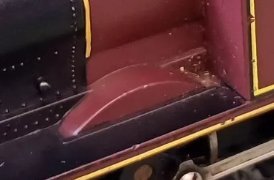
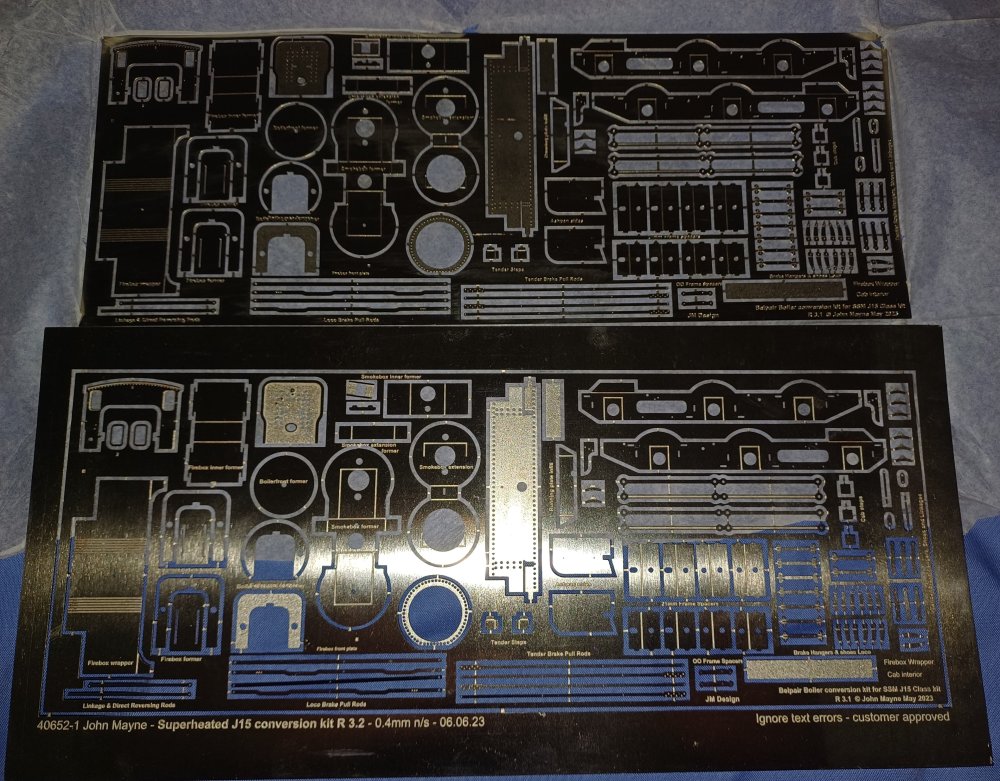
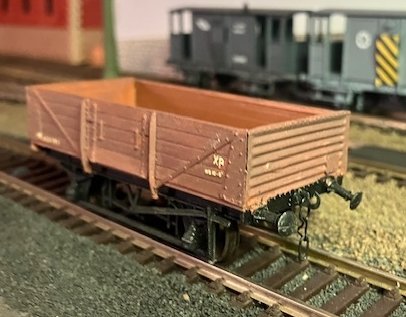
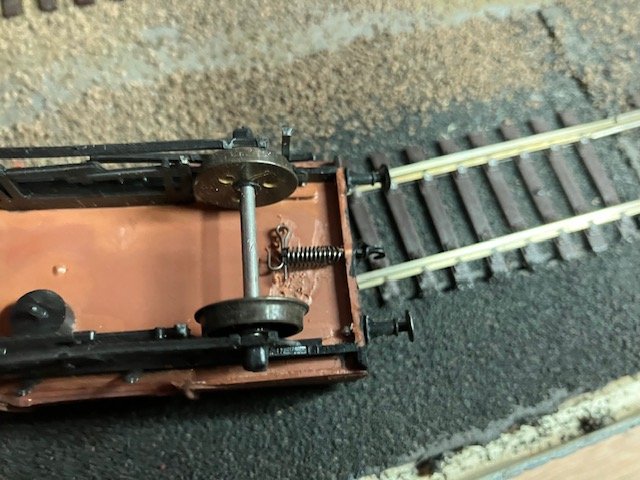



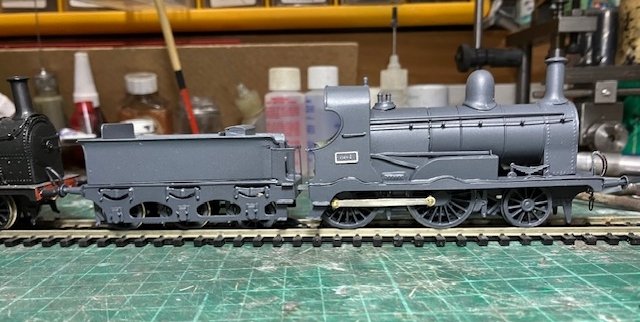

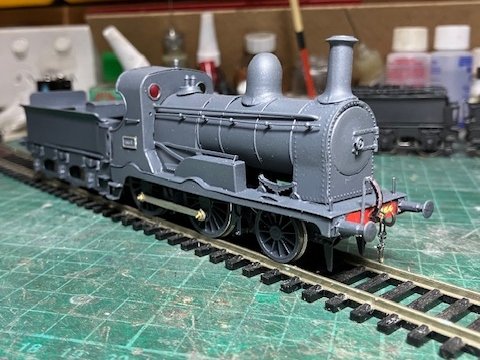

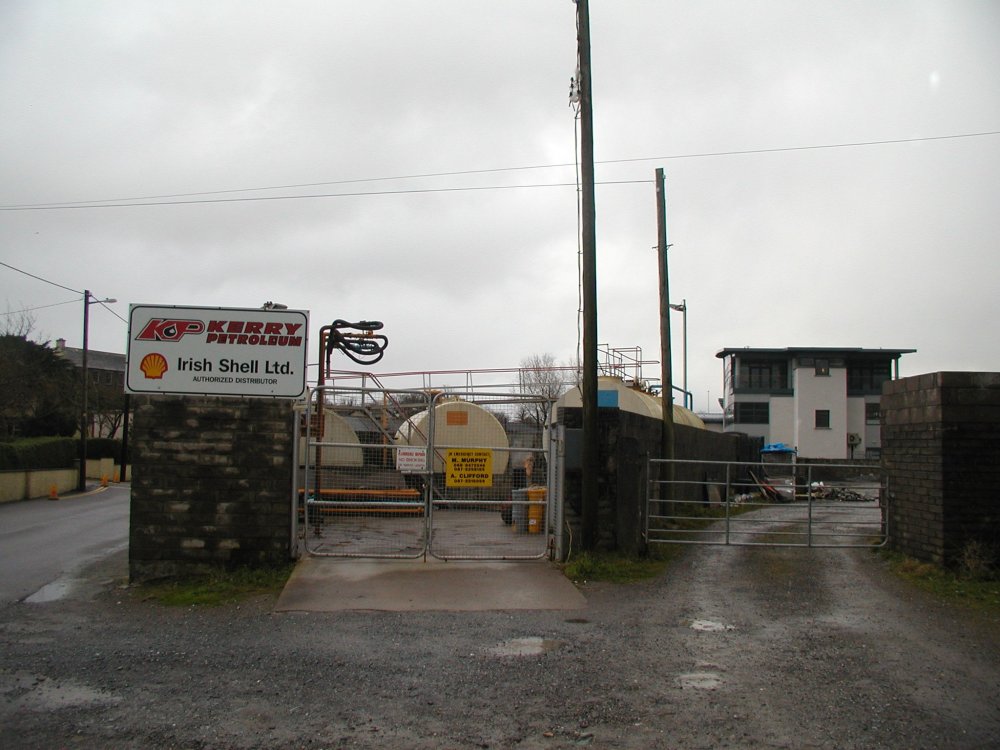
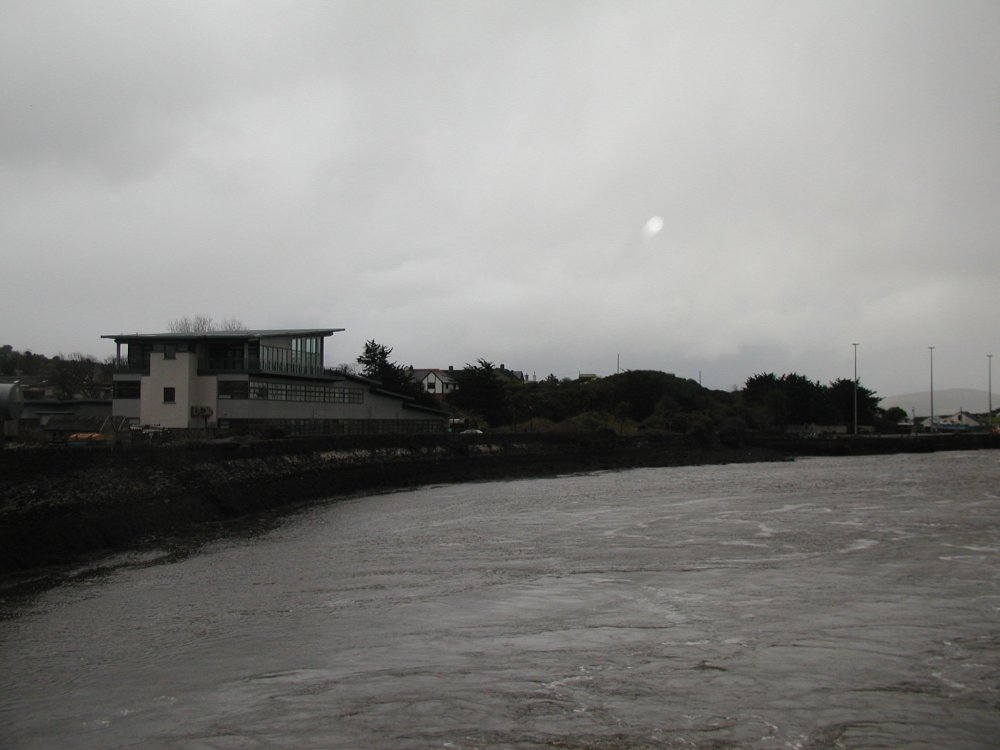
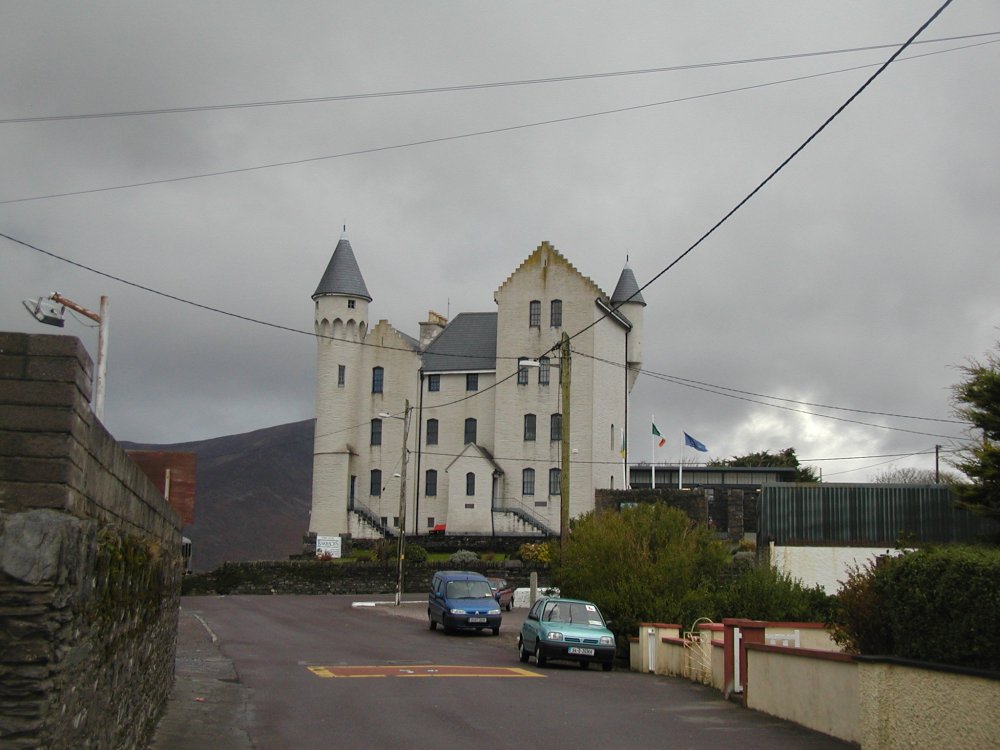
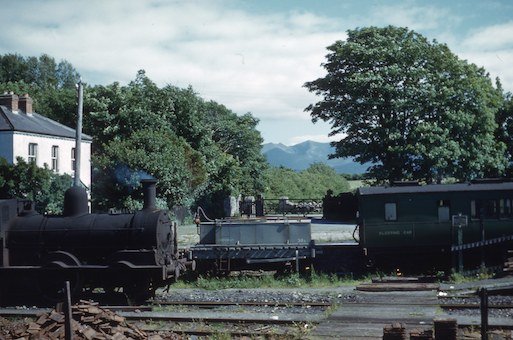

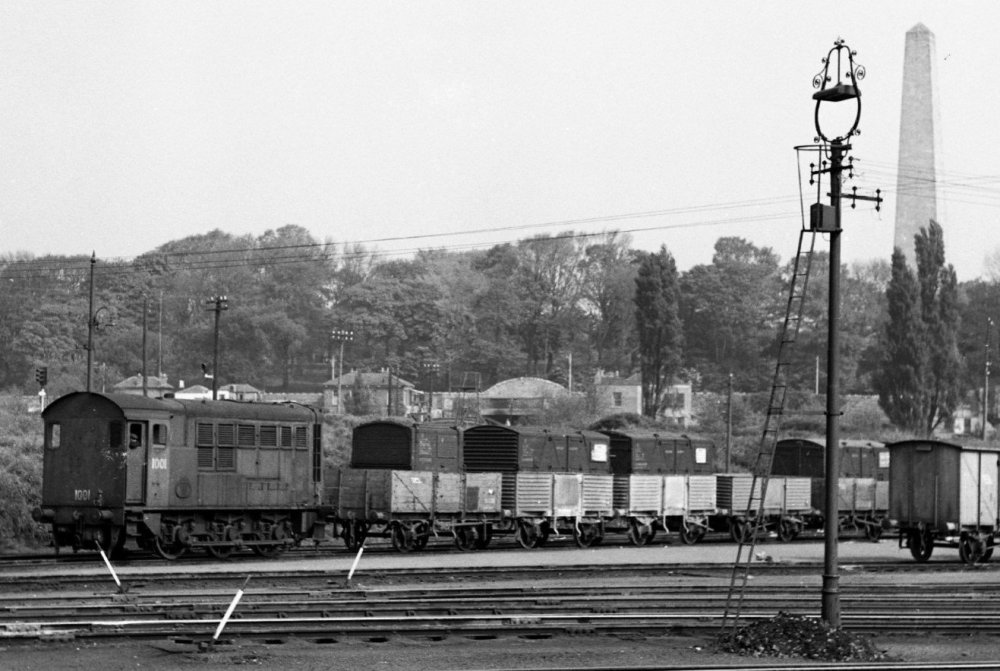
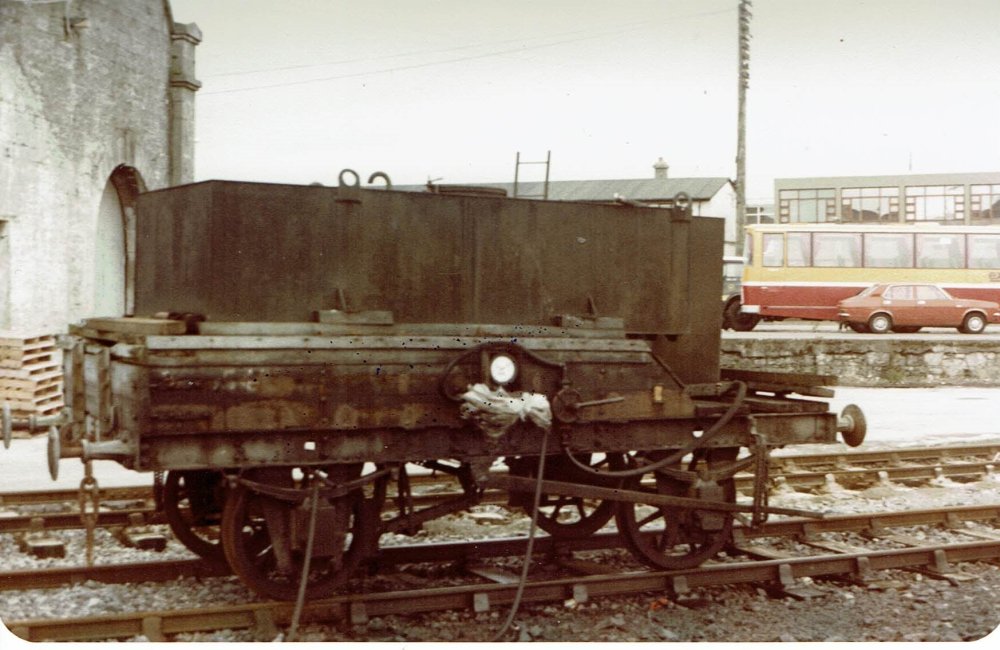

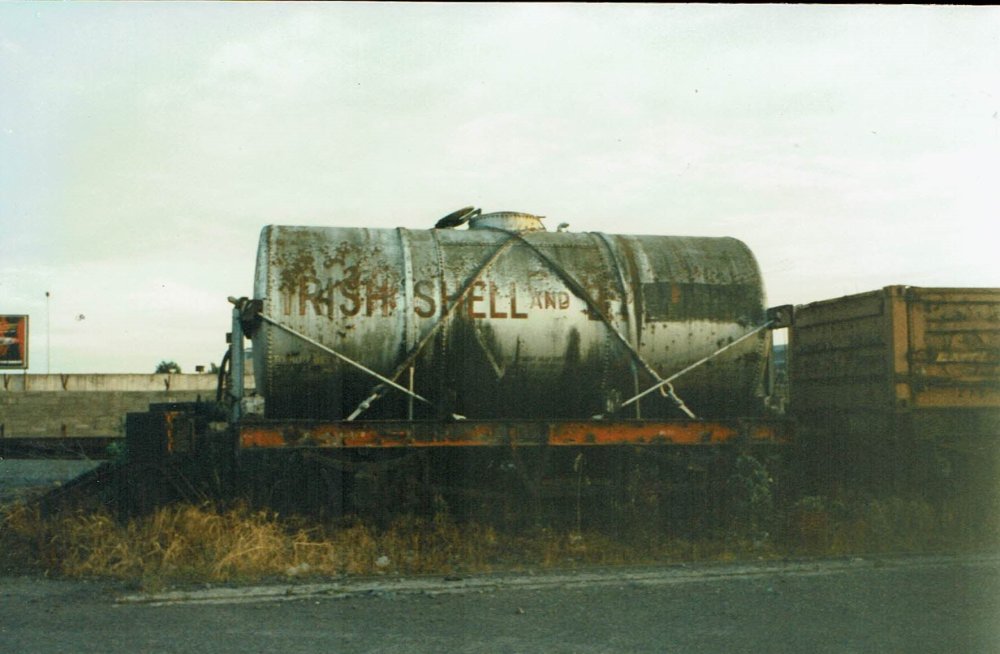
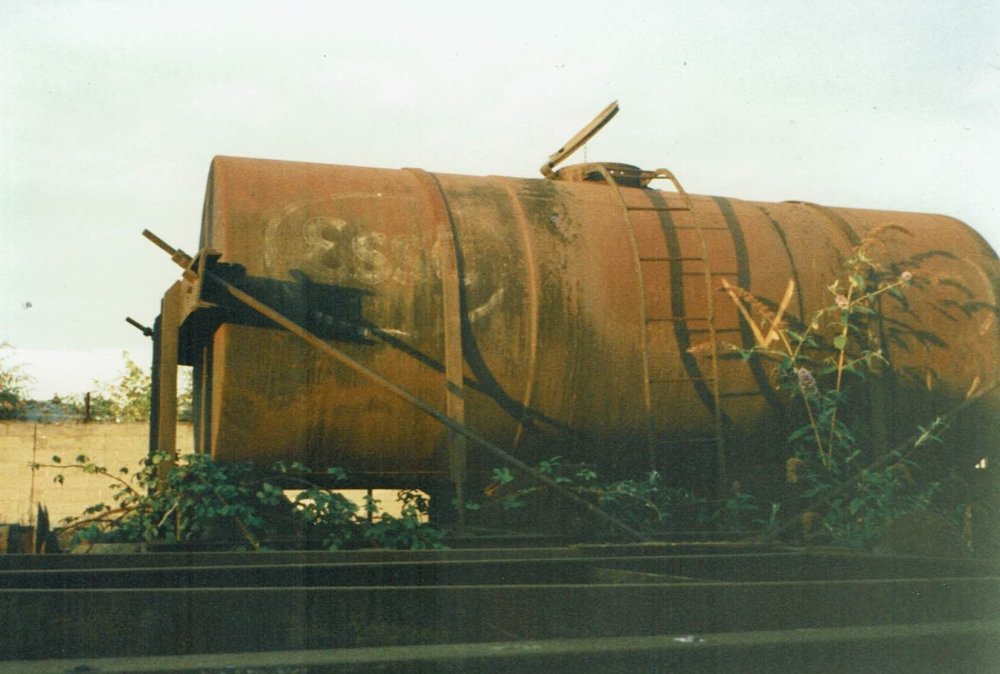
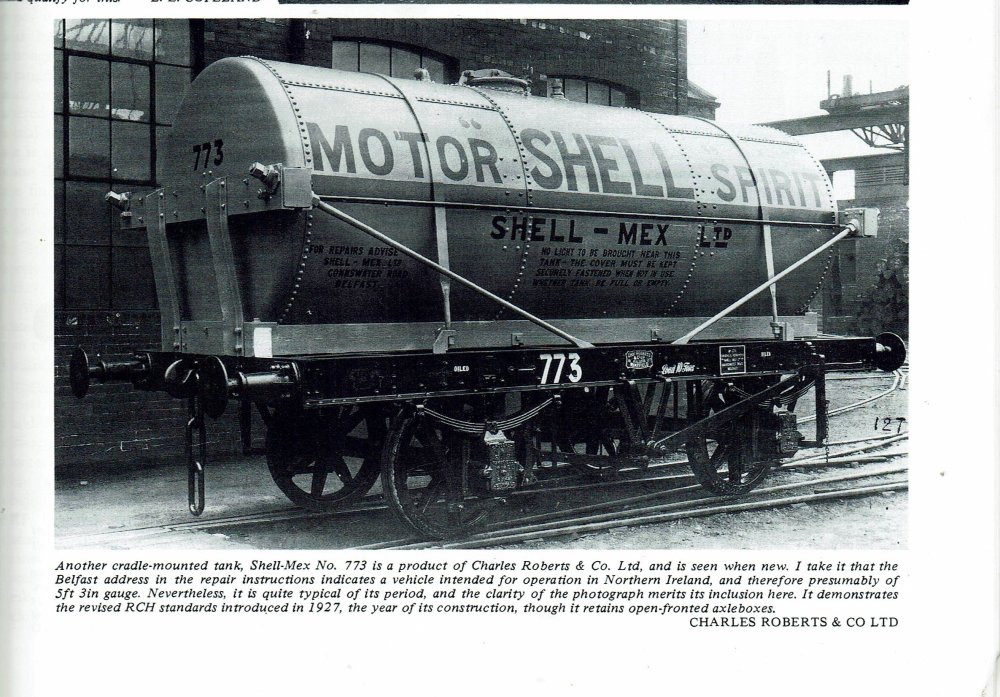
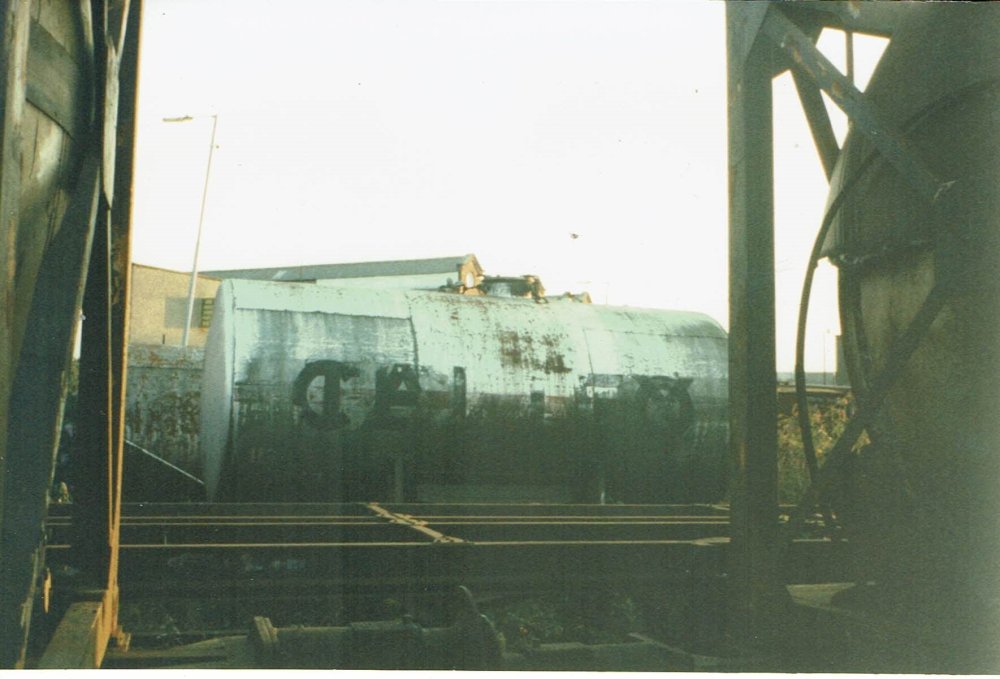
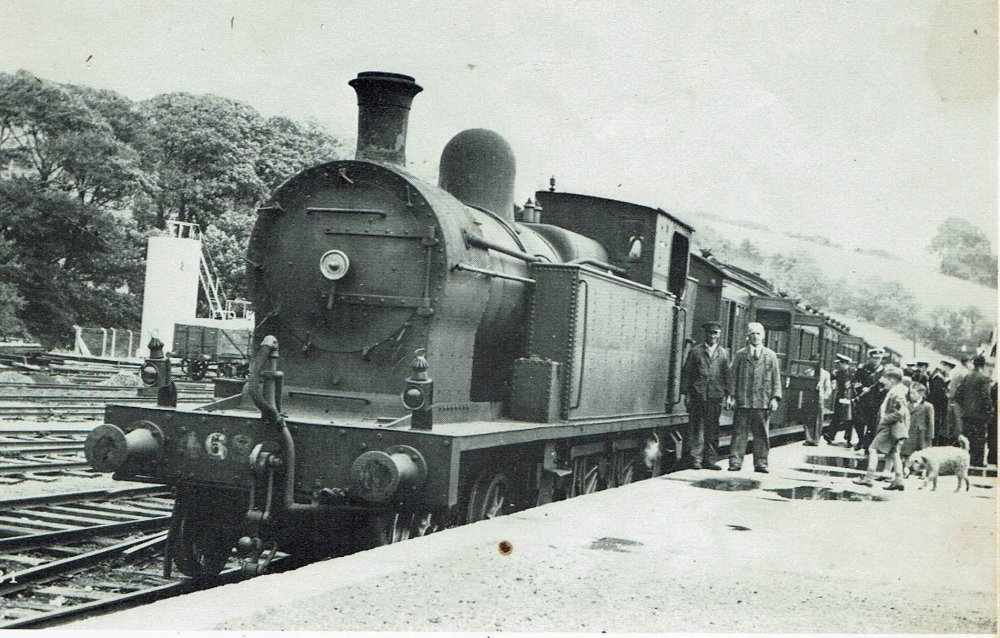
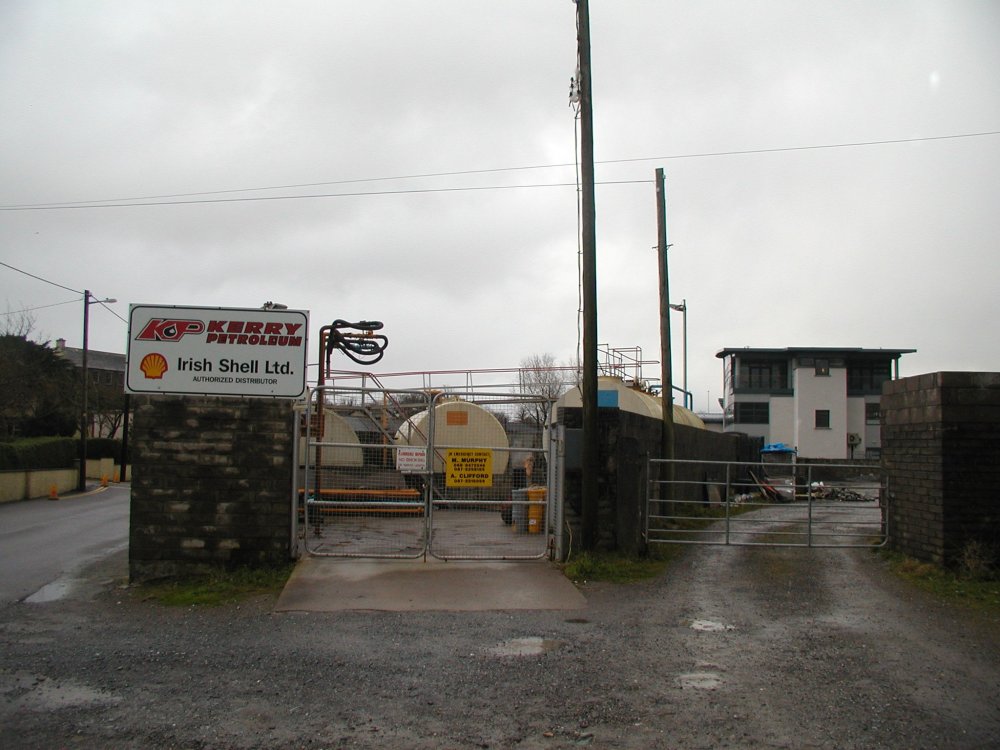
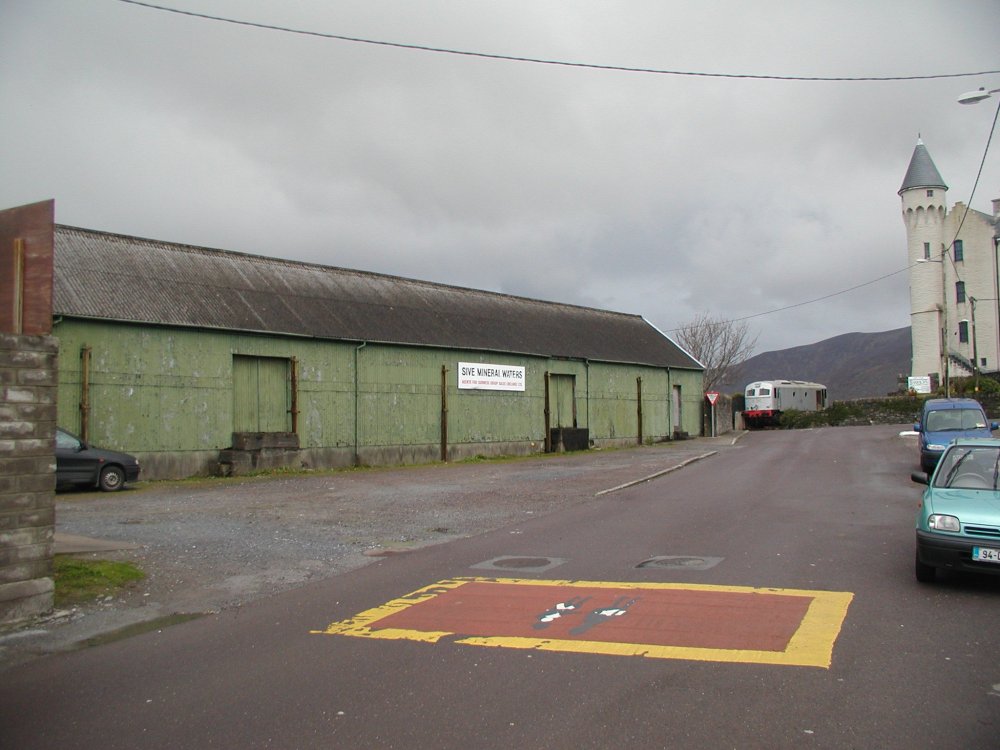
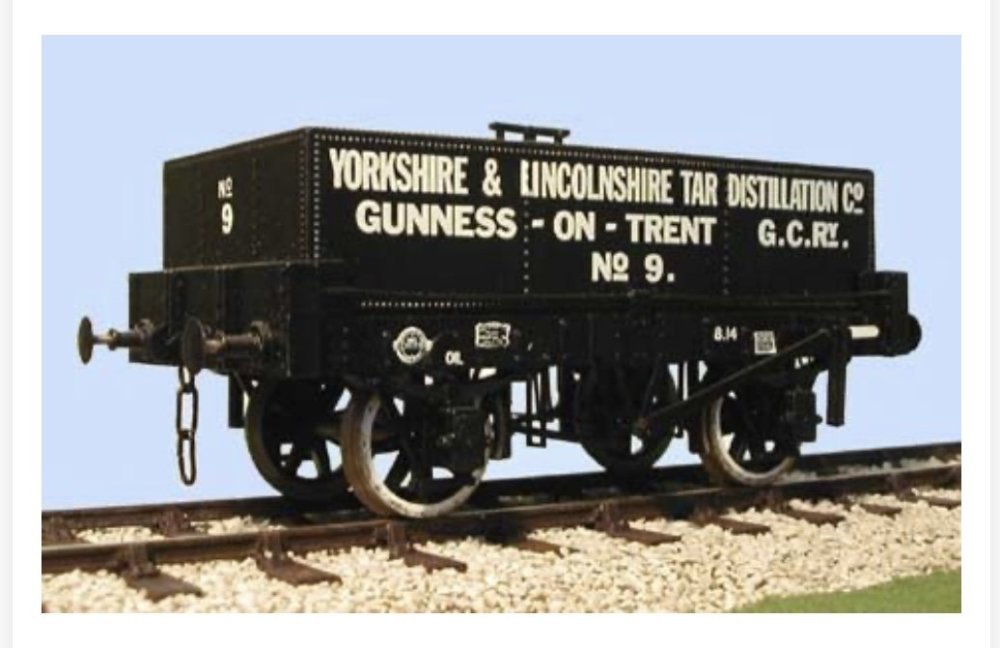

Updated Brake Van preview, Options for resuming production
in JM Design
Posted
The 3D parts required to fulfill our current orders arrived from our supplier in China today. Although I included an allowance for print defects and shipping damage all parts in todays shipment successfully passed receiving inspection.
At this stage I expect to begin fulfilling orders during October 2024, Brake Van decals are currently in transit from the UK!
Todays delivery included parts for a variety of wagons including Brake Vans, GSR Bulk Grain, GSWR/GSR, CIE 1946 and CIE LMA versions of the H Van
Once we have fulfilled current orders a small number of each type of wagon will be available in CKD or kit form.
"Receiving Inspection" prints are in a light green SLA resin with ABS properties which has similar resilient characteristics to injection moulded plastic.
CIE 1946 Version of the H Van. In the past he tapered ends of the corner angles and buffer shanks had been challenging to print with breakages a problem.
GSWR/GSR Van on earlier 9'6" version of the steel chassis with plate axleguards.
GSR Grain wagon discharge handwheel side.
Underside of Grain Wagon chassis. We modelled the discharge gear to test the capability of 3D printing and were quite impressed with the results.
The 3rd iteration of our 1st model the 20T Brake Van introduced in 1950 rebuilt late? 1960s with all metal duckets.
Our RTR wagons first receive a coat of grey primer before final clean up and removal of excess resin from the prints.